Running in Milan: five great routes
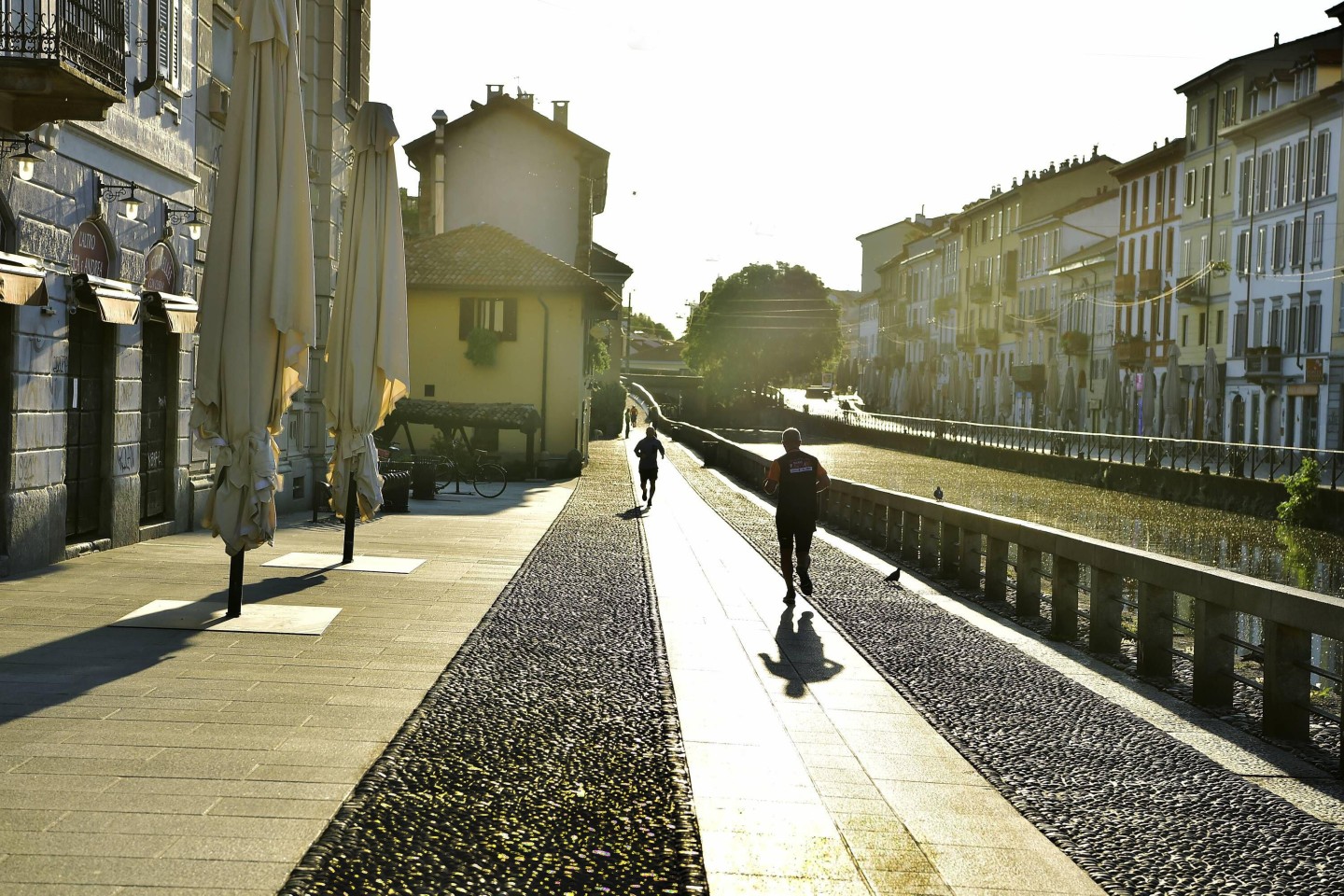
Roula Khalaf, Editor of the FT, selects her favourite stories in this weekly newsletter.
This article is part of a new guide to Milan from FT Globetrotter
Milan is not the best city for runners. That’s particularly true if you are used to jogging through bucolic parks in the centre of London and New York or along the leaf-dappled curves of the river Tiber in Rome.
Italy’s finance and fashion capital doesn’t offer easy 5k trails. Compared to most other large urban centres in Europe, you have to work harder in Milan to get your daily running fix, especially one that maintains a steady, uninterrupted pace from start to finish.
Your experience will depend on the day of the week and the time you decide to slip on your sneakers. Given the heavy traffic during commuting hours and increasingly poor air quality, you are better off starting early in the morning or heading out late at night. Also, mind your ankles as you will often find yourself running on uneven surfaces and narrow pavements, zigzagging between slow-walking sciure (local dialect for elegant older women) strolling with their coiffed dogs, fast-paced dapper bankers and stationary emo-attired Gen Zs waiting for a bus — all at once.
Despite all these hostilities, real Milanesi, indigenous and adopted alike, remain undeterred. “Running around the city is still the best way to discover it and experience the Italian culture,” says Bianca del Balzo, a former professional handball player turned marathon runner, who helped me discover some new running routes across the city.
“Compared with other Italian cities, Milan offers several opportunities for running enthusiasts, including lesser-known parks and green areas, historic routes around the city and the old town, and paths along canals,” she says.
What I have come to enjoy most about running through Milan is seeing how much it has changed since I was kid in the late 1980s and 1990s. Back then, it felt somewhat grey, provincial and hostile to outsiders. Today it feels multicoloured, global and more open than ever to those willing to embrace it. That feeling of positive change tends to give my endorphins an even bigger boost, turning a normal run into a super one.
From shorter, daily jogs to long-distance runs, below are five of my favourite routes that showcase Milan’s evolution — and, of course, take in some of its most impressive historic sites, beloved parks and beautiful gardens.
Parco Sempione (3.5km–7km)
Good for: Anybody looking for an easy, car-free run in the centre
Not so good for: If you want to run long distances
FYI: For a quick breakfast, grab a cornetto and cappuccino at Bar Canonica if staying north of the park, or treat yourself to a pasticcino (pastry) and espresso at the classy Marchesi to the south of the park.
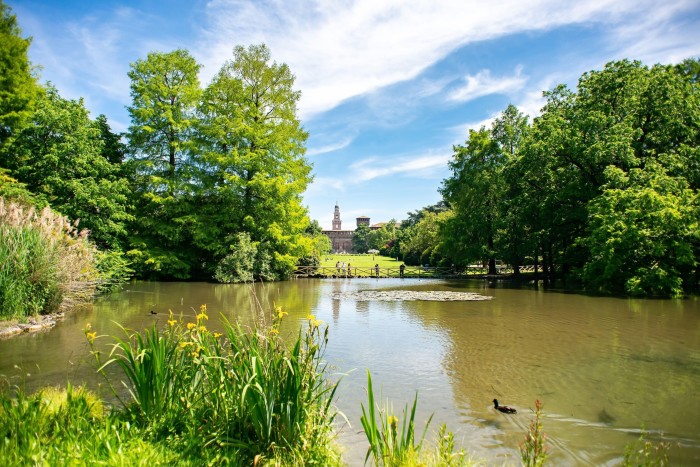
Over the past few summers I’ve spent part of my time living in Milan’s Chinatown, a vibrant area that embodies more than any other neighbourhood how the city has shed its staid past and embraced multiculturalism, culinary experimentation and a renewed coolness. Near it is my favourite spot for a morning run: Parco Sempione, which surrounds the city’s medieval castle, Castello Sforzesco. It has a good running path and is well lit and safe to run at night.
This green lung in the heart of the city has a circumference of just under 3.5km and is beloved by runners who live or are temporarily based in or close to the centre. To keep it easy, on weekdays I run twice around the park to hit my daily 7km. If you want to be a bit more adventurous, once you complete a loop you can continue by following a decently signposted trail inside the park that is about 3.2km long.
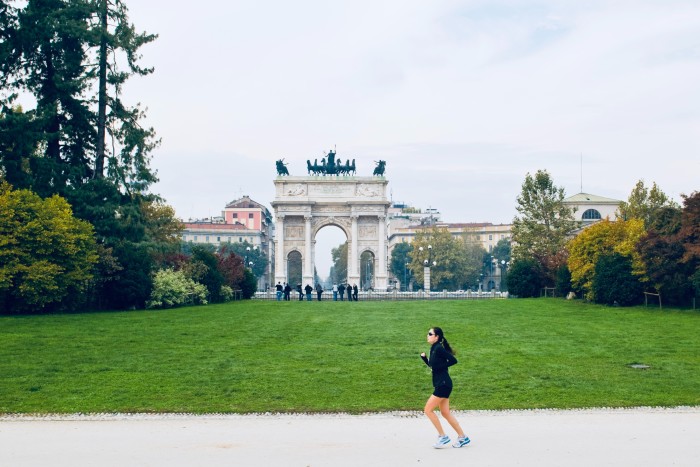
Whatever you decide to do here, you will be blessed with a number of beautiful monuments, including the 19th-century Arch of Peace, the Triennale art and design museum, and the neoclassical Arena Civica, a stadium built in the 1800s.
CityLife (5km)
Good for: Finance folks who want to squeeze in a lunch run near Milan’s Canary Wharf
Not so good for: If you would like to run in a more historic setting
FYI: It’s the largest car-free area in Milan
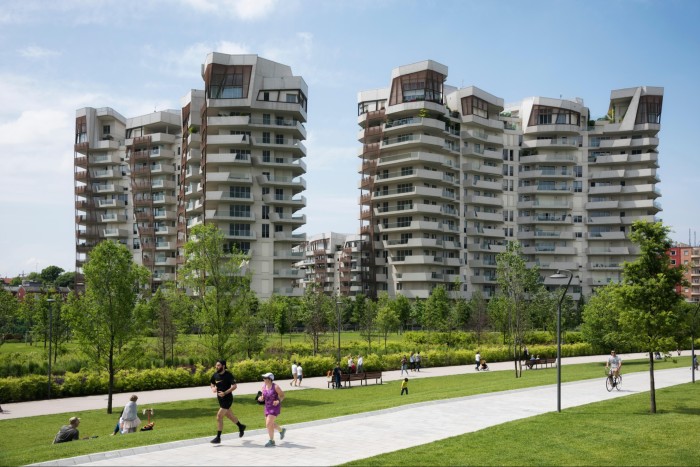
Dotted with gleaming skyscrapers built by international starchitects Zaha Hadid, Arata Isozaki and Daniel Libeskind, CityLife is the most modern part of Milan, and offers several running options, from short to long. If you work here or are visiting the offices of insurers Generali and Allianz, or the Big Four accounting and consulting firm PwC, you can easily fit in a lunchtime run around here.
You can start from Piazzale Giulio Cesare and continue towards the Parco Tre Torri, running mainly on grass or pavement past some of the tallest buildings in the city. Alternatively, run around the outer perimeter of CityLife from Piazza Giovannia Amendola, along Viale Berengario — passing Castello Pozzi and its house of cards-like sculpture — and Viale Eginardo to Portello (the route is more concrete here), before returning on the Palazzo delle Scintille side. Continue along Viale Cassiodoro and follow the main road as it turns briefly into Viale Belisario and then Viale Ezio until you return to the square where you started.
City centre (5km or 7.7km)
Good for: Admiring the city
Not so good for: The terrain can be very uneven, so watch your ankles
FYI: Stay alert and don’t get run over by a tram
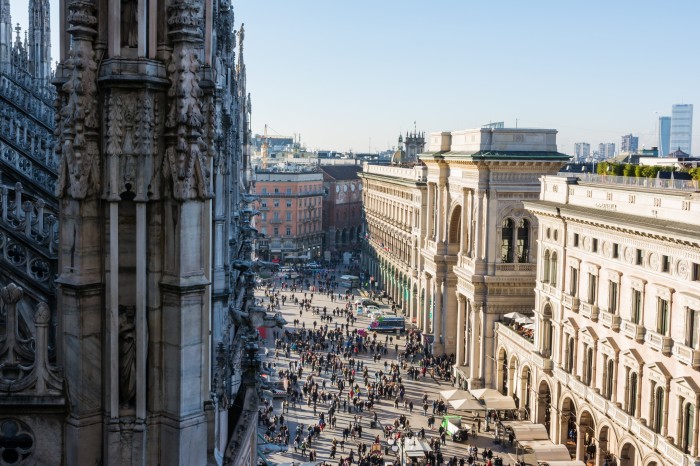
This is probably the least relaxing run you can do in Milan — but it’s also the most stunning.
The trick is to head out early in the morning, when the roads are still empty. Del Balzo suggested starting from one of the main city entrances, or bastioni. Pick Porta Venezia, which is probably my favourite and ideal if you are working close to the financial district. Then head towards the Giardini Indro Montanelli, the oldest city park in Milan. Keep going towards Piazza San Babila, which is surrounded by fashionable boutiques, and continue along the pedestrians-only Corso Vittorio Emanuele II, which will take you to the breathtaking Duomo.
Here you can opt for a shorter route or a longer course.
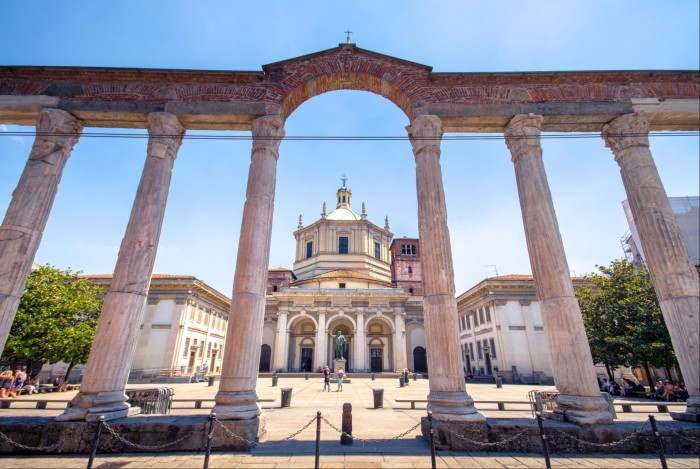
For a 5km run, turn right into the iconic Galleria Vittorio Emanuele II, which leads to Piazza della Scala and the world-famous opera house. Turn right again on Via Alessandro Manzoni, pass the Archi di Porta Nuova and keep to your right on to Via Palestro. Enter the Giardini Indro Montanelli, home to the city’s Natural History Museum and the planetarium, and make your way back to the start of your run.
For the almost 8km option, from the Duomo turn left into Via Torino, pass by the Colonne di San Lorenzo, with its 16 Roman columns, and keep going towards the Arco di Porta Ticinese, another historic landmark, where you will turn left again on the ring road that divides the centre from the rest of Milan. Keep going, and pass the Arco di Porta Romana city gate and Piazza Cinque Giornate before you return to Porta Venezia.
Boscoincittà (2.5km–12.5km)
Good for: For the variety of runs, both in scenery and length
Not so good for: Anyone in a rush as it’s a little off the beaten track
FYI: To get there by public transport, take the M5 metro line and get off at San Siro Stadio and warm up with five-minute walk. Or take the M1 to Molino Dorino and walk to Via Ponte del Giuscano
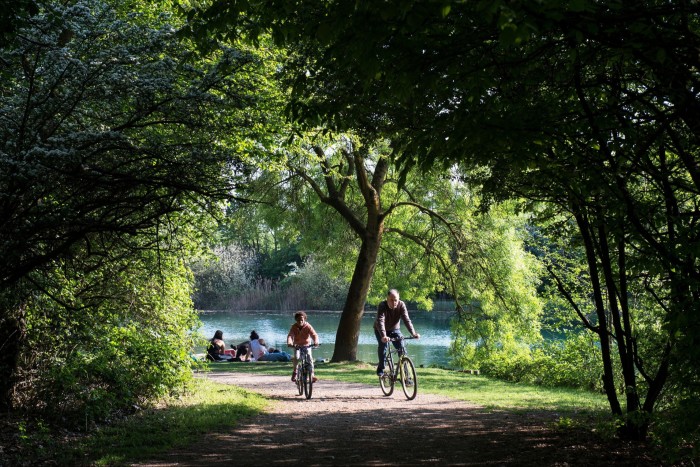
This huge public park on the outskirts of the city is filled with picturesque meadows, streams and wetlands. During the spring and summer you’ll see locals tending to patches of land assigned to them by the commune, growing everything from tomatoes to orchids.
You will have numerous routes to pick from. Del Balzo says she likes this mini forest because it has interconnected loop trails that include the Green Route, a 2.5km run around the pond, the 4.5km Blue Route and the Red Route, which is 5.5km long.
The surroundings are truly stunning thanks to the nearly 20,000 trees. If you need the loo or to rest, there’s Cascina San Romano, a recreational area. And if you’re doing the route on a weekend, you can also book a grill to have a barbecue.
There are several entrances, including off Via Novara, Via Ponte del Giuscano and Via Cascina Bellaria. If you’re driving, there’s free parking.
Naviglio Grande (21km–42km)
Good for: Long-distance runs and marathon preparation
Not so good for: It can get a little monotonous
FYI: Bring water and gels (plus cash) as you might struggle finding refreshments — there are very few shops
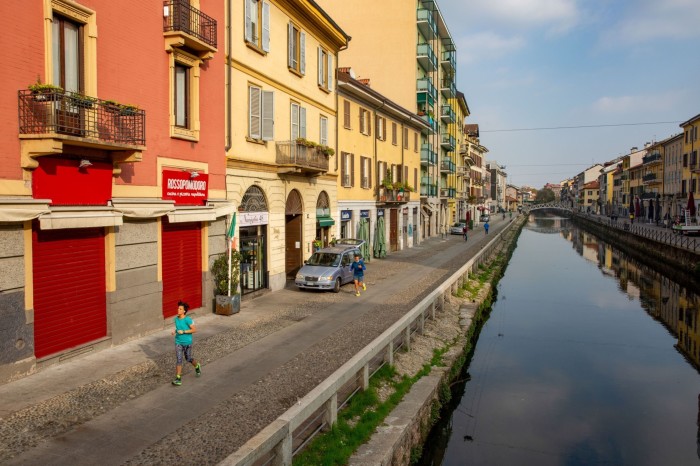
This is clearly not ideal for a weekday run but if you happen to stay a little longer, this canal route works well for long distance training.
Start from the Darsena del Naviglio and proceed towards the Alzaia del Naviglio Grande, which is the road that will accompany you for the entire route. When you reach the crossroad with Via Valenza, there is a ramp on your left that allows you to descend under a bridge at the height of the canal and then continue alongside the water all the way.
Whenever I hit the banks of the Naviglio, I feel like I’ve left the city behind me and I’ve entered a new space, which becomes greener and more colourful as you pass lush courtyards with typical Milanese railings, small churches, farmsteads and the historic Milan Rowing Club. There are moments when you are running in utter isolation, although occasionally I have what look like pros whizzing past me.
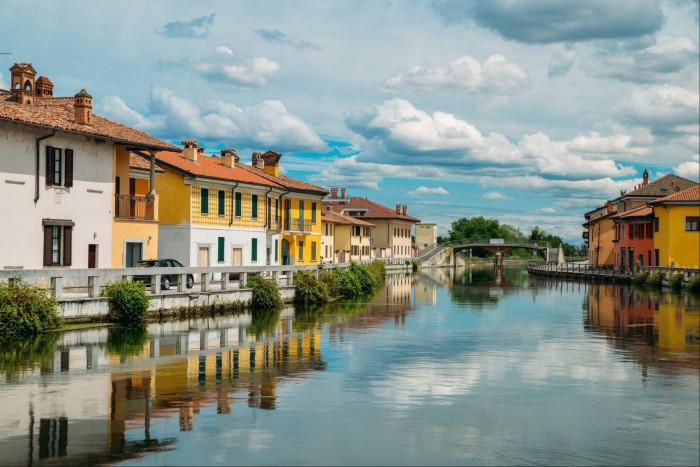
Once you are about to reach kilometre 13, you’ll find a bridge in the town of Gaggiano — cross it to avoid a bigger road with a lot of traffic and keep going until the canal splits in two, skirting the small church at the entrance of the town of Abbiategrasso. At this point you will see on your left the Ristorante all’Orto di Sant’Antonio, which means you’ve hit kilometre 21. Here you have the option to call it a day and enjoy a well-deserved lunch before you take a taxi back. Otherwise, channel your inner marathon runner and make a glorious return to Milan.
What are your favourite running routes in Milan? Tell us in the comments.
Follow FT Globetrotter on Instagram at @FTGlobetrotter
Cities with the FT
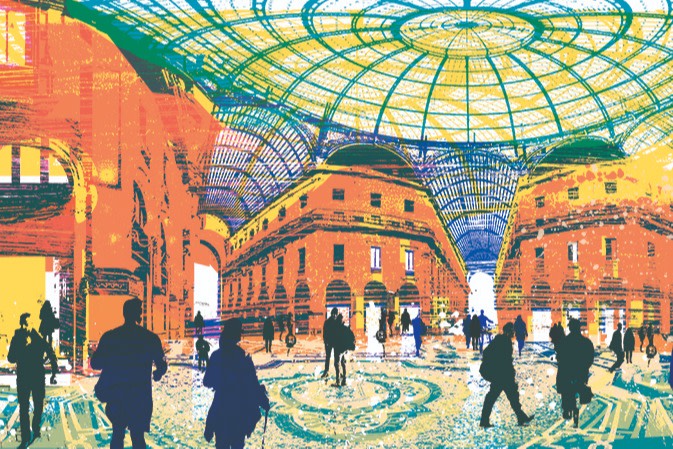
FT Globetrotter, our insider guides to some of the world’s greatest cities, offers expert advice on eating and drinking, exercise, art and culture — and much more
Find us in Milan, London, Tokyo, New York, Paris, Rome, Frankfurt, Singapore, Hong Kong, Miami, Toronto, Madrid, Melbourne, Copenhagen and Zürich





Comments